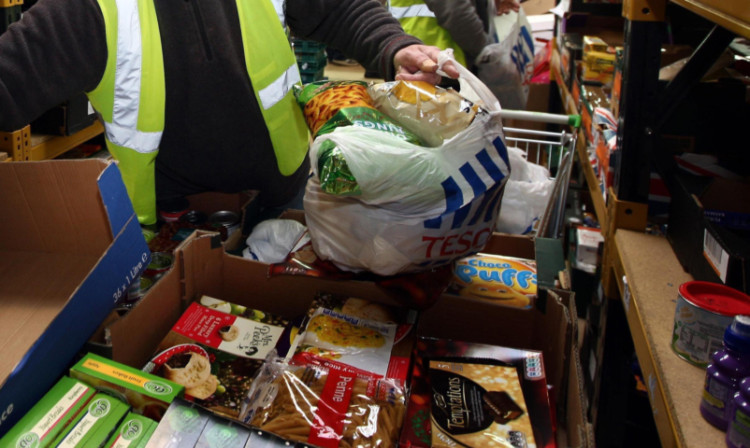Around three-quarters of people who use foodbanks are forced to do so because of cuts to the benefits system, according to Citizens Advice Scotland.
Nearly 1,000 people have been referred to foodbanks by advisers at local Citizens Advice bureaux since April, the body said.
The figure was revealed on World Food Day as the Trussell Trust said it provided a three-day food package to more than 350,000 people across the UK between April and September, three times as many as the same period last year.
Citizens Advice Scotland said the official statistics show only the “tip of the iceberg” – around half of those who use foodbanks are in low-paid work.
Chief executive Margaret Lynch said the figures are “truly shameful” and paint “a bleak picture of a Dickensian society”.
Advisers see many clients on the verge of needing a foodbank while others go without food or take out loans just to pay for it, she said.
An analysis of 500 recent cases found that 73% of people who needed to use a foodbank did so because of problems with their benefits.
Almost a third did so because their benefit was delayed (30%), around one in five lost their benefit through sanctions (22%), one in seven were hit by an employment and support allowance reassessment (14%) and 7% cited the so-called bedroom tax.
“The reason for the rise in foodbank cases is that household incomes are not keeping up with the cost of living,” Ms Lynch pointed out.
“Half of those who use foodbanks are actually working but their wages are too low to sustain them. The other half are people on benefits, whose low incomes have been squeezed even further by harsh policies like the bedroom tax. And with more welfare cuts on the way, this situation looks set to get even worse.
“Foodbank charities like the Trussell Trust are doing a great job helping people in need. But food parcels in themselves don’t address the underlying causes of poverty. Governments need to understand the extent of this crisis, and take action to address it.
“Food parcels should not be seen as a policy response to that issue; rather, policy should be focused at ensuring that families do not experience these problems at all and are able to put food on the table. That doesn’t seem like much to ask of a civilised society in 2013.”
The Trussell Trust has written to Prime Minister David Cameron calling for a public inquiry into the causes of UK food poverty and the surge in foodbank use.
